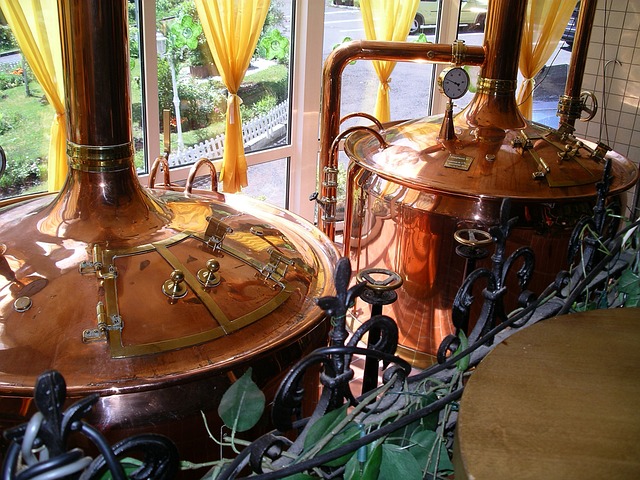You Crafted Your First Brew, Now What?

Congratulations! You have a recipe Aussies will love every time they sip or down a golden fluid of pure home crafted deliciousness. And you’re ready to add to the country’s growing list of independent and micro craft breweries, satiating beer lovers’ desire for homegrown boutique options ready to go head-to-head with the world’s best.
Crafting a potentially winning beer formula is only the first step, unless you keep the recipe to yourself and a select others. However, getting a share of Australia’s $1 billion craft beer industry requires additional steps.
Fret no more. We will show you what you should do next.
Identify Your Target Customers
Although anyone at least 18 years old can buy and drink alcoholic beverages in Australia, you don’t want to stretch your business between 18 and 99 (perhaps beyond). Doing so is not only cost-ineffective, but having expansive target customers could exhaust marketing and sales resources.
How should you define your target audience, then?
- Study industry trends. You might want to know that one in three Australian craft beer drinkers belong to the 30-39 age groups. Only 13% beer drinkers are younger.
- Analyse other craft beer makers, especially who they sell to. Do you want to go head-to-head with competition or go another route by identifying a different customer base?
- Create at least three “personas” or “consumer personalities” to zero in on the best possible target customer.
Study and Comply with Regulatory Requirements
Defining your target craft beer audience is one thing. Complying with pertinent laws is another. These regulations not only protect you from potentially costly legal battles, but also safeguards consumers.
- Check the state and city government for licenses, permits, and other documents you must prepare to open a micro brewery and sell and distribute craft beer. You don’t want any legal entanglements in your business venture.
- Prepare the required documents and apply for the necessary permits and licenses. You can always seek assistance if you’re confused about these requirements.
- Although not a legal requirement, consider getting craft brewery insurance to protect your investment against liabilities, uncontrolled business interruptions, property issues, and more.
Develop Your Brand
Crafting the most delicious beer doesn’t mean anything if you don’t know how to present it to customers in a way that captivates their hearts and imaginations. After all, would you drink craft beer from a plain-looking glass bottle without any markings or identifying symbols?
Branding is crucial if you want to survive in the dog-eats-dog marketplace. Remember, you’re not the only one crafting beers for Aussies. The country now has at least 351 craft breweries, and standing tall and proud among contemporaries can be challenging if you don’t have a unique brand.
How?
- Brainstorm with family, friends, and fellow beer lovers to define your craft beer’s identity. Consider the “motto,” “tagline,” or “catchphrase” you want consumers to associate your craft beer. Don’t forget the colours, themes, patterns, or styles to make your brand stand out.
- Start with a few sketches about the logo, including the bottle or keg label design. If you find this task daunting or artistically challenging, consulting a logo creator or brand specialist should be a wise move.
- Pick a strategy for brand marketing. Most craft brewery beginners leverage online platforms, although some prefer to start locally. You could do both, ensuring uniform brand messaging across channels.
Set Up Your Brewery
Crafting a golden brew captivating the palates of Australia’s ardent beer drinkers is one thing. Creating delicious beers continuously and consistently is another. And that’s why having the correct craft brewery setup is crucial to avoid running low on supply and earning your customers’ ire.
Setting up a microbrewery isn’t a small feat. It requires a substantial investment, something to consider when venturing into this market. So, how do you organise a craft brewery to ensure efficient operation and maximise beer production?
- Check your taproom (or brewery location) and assess its dimensions. You can consult a brewery expert to design the layout, allowing you to fit different craft beer-making essentials.
- Decide whether to buy brand-new brewery resources or shop second-hand from existing breweries. Some microbreweries sell used equipment and machinery when replacing them with new ones or upgrading to newer versions.
- Invest in good-quality brewery equipment, including brewing systems, fermentation supplies & resources, bottling technologies, kegging platforms, safety equipment, sinks, and accessories.
- Develop and institutionalise quality control protocols and measures to ensure craft beer quality and consistency. You will want the last bottle or keg of delicious craft beer to remain as delicious, bold, and sparkling as the first.
Decide How to Sell and Distribute Your Beer
You have the recipe, the papers, and the brand to accompany the next big thing in Australian craft beers. But hold your hats because you must determine how to sell these creations. Here are some tips.
- Optimise your space. Most craft breweries start small, opting for a taproom on-site, where guests can sample the golden liquid and buy a bottle, case, or keg to bring home. Remember, the government doesn’t want breweries to sell craft beer or any alcohol to anyone younger than 18.
- If your home or current space cannot accommodate a taproom, you can consider distributing your creation to local food and beverage players. Offer a sample to bars and pubs in the neighbourhood, or try restaurants, hotels, party places, groceries, and retail stores.
- Consider partnering with a local distributor. Although this trick entails costs, a third-party distributor saves you time and effort transporting your craft beer from the brewery to business partners.
Conclusion
Crafting a personal blend of the finest ingredients to produce a beer with a distinct wow factor is very satisfying. The steps we shared describe how you should proceed monetising your creation. However, it doesn’t end there.
You must establish, sustain, and reinforce meaningful relationships or connections with your craft beer network (i.e., local businesses, distributors, suppliers, and consumers). They are your partners in seeing your craft beer business grow and thrive amidst Australia’s highly competitive independent beer brewery market.





